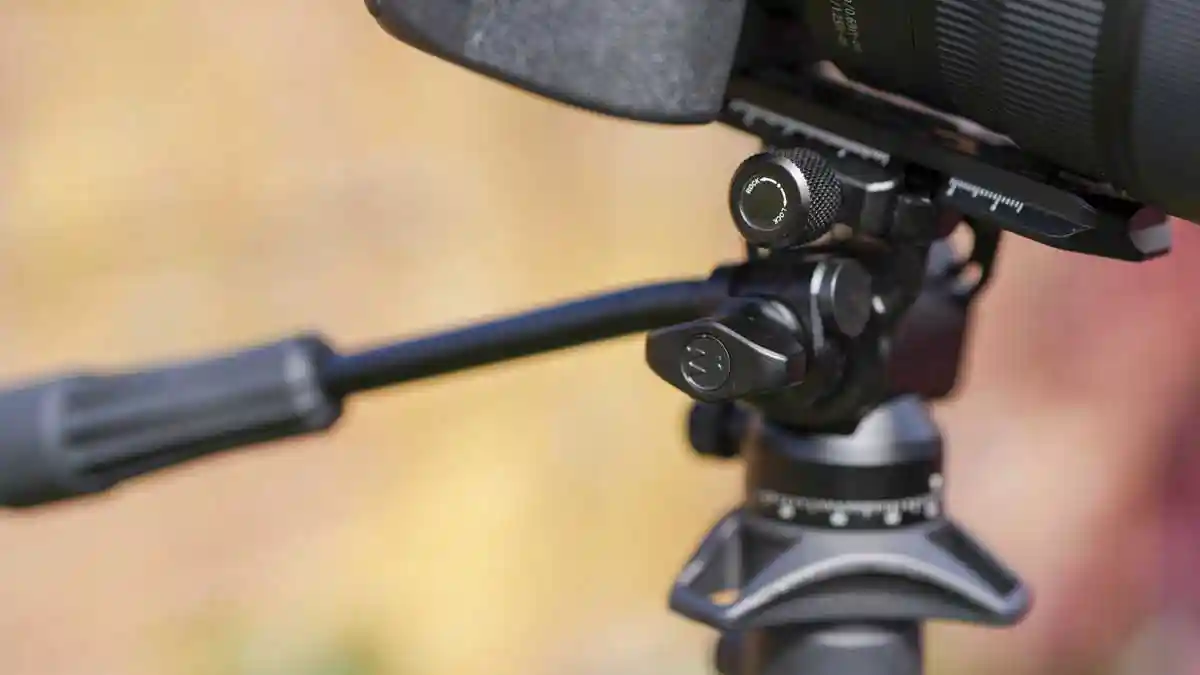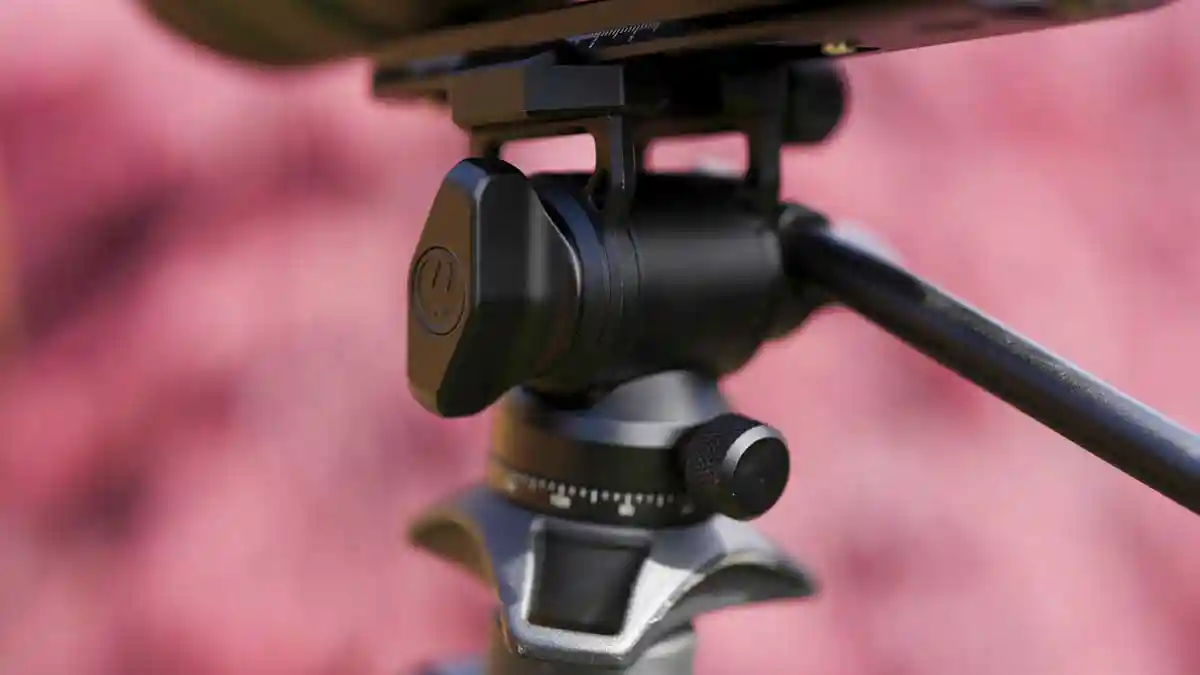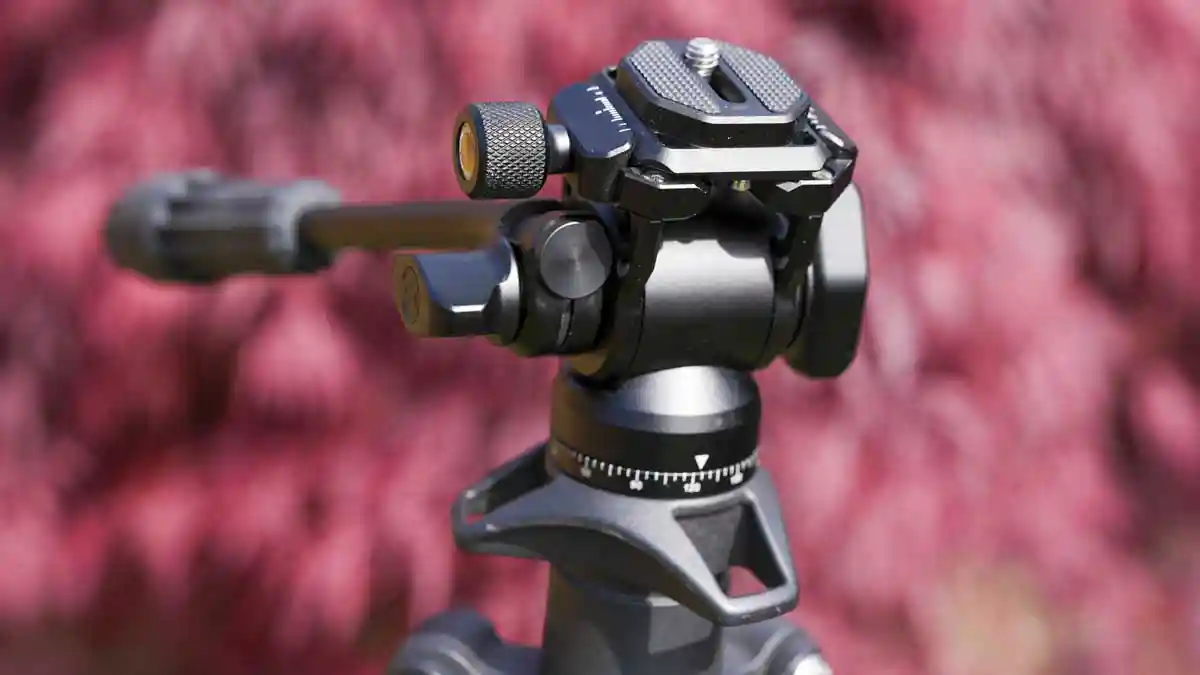The AirHed Trinity is a compact, fluid-motion pan and tilt head designed to offer stable support for cameras and scopes. Essentially, it’s a lighter, smaller version of a standard pan and tilt head, making it an ideal match for the Punks range of tripods and smaller video setups. For this test, I paired it with the Punks Billy 2.0, removing the center column to enhance its video capabilities. I also tested it on a hike across Cranbourne Chase to photograph birds of prey. The head is lightweight, adding minimal weight to my backpack. It’s constructed from all metal, giving it a high-quality look and feel with a matte black anodized finish, though a striking copper version is also available. The head features a 360-degree panning base and a wide range of tilt movements, making it suitable for high or low shots. Originally used for sports and wildlife photography, its smooth pan and tilt action also make it ideal for video.
Our Verdict
3 Legged Thing recently introduced the AirHed Trinity, a compact pan and tilt head designed for various applications, from sports and wildlife photography to video production. Its small size makes it perfect for everyday use and travel. I tested it with the 3LT Punks Billy 2.0 tripod, enhancing its video capabilities by removing the centre column. The Trinity offers solid support and flexibility for effective tracking and panning. It features a small base plate and includes a multitool for adjustments. Despite its size, it balances well and is compatible with various equipment, such as tripods and monopods, providing a versatile, lightweight option for diverse shooting needs.
For
- Compact
- Lightweight
- High build quality
What is the 3 Legged Thing Trinity?
Specification
- Height: 8cm
- Width: 9cm
- Weight: 350g (without base plate)
- Load capacity: 5kg
- Arca Swiss compatibility: 38mm
- Pan: 180º
- Tilt: 170˚ (+90˚ / -80˚ )
Design
The design of the AirHed Trinity is compact and lightweight, making the head ideal for everyday use, travel, and fieldwork. Although simple, the full metal build gives it a solid and robust feel. The materials follow 3LT’s commitment to using advanced high-end metals, with aerospace-grade magnesium alloy utilized throughout, finished with a tough matte black anodized finish.
The base features a standard 3/8″ thread, allowing the Trinity to be mounted onto any standard tripod, and includes a 3/8″ to 1/4″ adapter for compatibility. It also features a standard 38mm Arca-Swiss compatible quick release plate, ensuring full compatibility with 3LT’s range of L-Brackets and the newly released Ultra plates.
On the head itself, there are four points of adjustment, controlled by either knurled knobs or precisely CNC-machined lever knobs. The two knurled knobs release and lock the base plate, while the lower one releases the 360º pan movement. The larger knobs release the tilt, allowing for a 170˚ (+90˚ / -80˚) range of tilt and enabling angle adjustments of the panning arm. A notable feature here is that the panning arm can be removed if necessary, but its design is small and discreet, fitting well with the overall aesthetic.

Build Quality and Handling
The full metal construction of the head imparts a high-quality feel, with CNC machining enhancing the ergonomic and tactile nature of the aerospace-grade magnesium alloy, ensuring it is both comfortable to handle and incredibly durable. The small baseplate is designed to complement the overall compactness of the head, and it incorporates several functional enhancements. Small silicone pads on the contact area help prevent slippage and protect equipment from scratches. Additionally, each corner of the baseplate has a small hole for attaching straps and other items, and its square shape facilitates easy camera mounting.
While the small square baseplate is functional, I often found myself opting for the smaller Ultra Plate, particularly when using the head for video applications. The head allows two main movements—tilt and pan. The panning motion is smooth across the full 360 degrees and locks firmly in place. The tilt mechanism is more straightforward, lacking friction control; tightening it restricts movement, making the loosen tilt action smooth and providing fluid control, although tightening the tilt friction somewhat reduces this smoothness.
The compact design extends to the short panning arm, which includes some angle adjustment but is not overly complex, effectively aiding in pan and tilt movements. The knobs are well-shaped and finished, making them easy to identify and grip, especially in colder conditions—a relief given that it’s almost May and still chilly.

The panning arm, measuring 20cm, features a rubber grip at the end. This grip design is more understated than previous 3LT designs, giving it a mature and refined feel.
Performance
In use, the small head is surprisingly big on performance, easily supporting cameras that dwarf its size. With a Sony A7 IV and a 70-200mm f/2.8 lens attached, the head might be hard to see under the bulk of the body, yet it is more than capable of handling the weight. In fact, the head has a load capacity of up to 5kg (11 lbs), making it suitable for almost any camera-lens combination that enthusiast photographers might use.
The strength of the tilt mechanism smoothly returns the camera to the center position when released and adds potential for motion shots during filming. With both the pan and tilt axes released, there is ample scope for smooth, fluid motion in both functions, enabling precise control for both stills and video.
The inclusion of the Arca Swiss quick-release system facilitates rapid equipment swapping and compatibility with 3LT existing L-Brackets, like the Ellie, making mounting existing kits easier than with the small square base plate.
 In use, the small head proves to be exceptionally easy to use, from mounting and securing the camera to the pan and tilt actions. Although the knobs are close together, there is just enough space between them to adjust without pinching fingers, and all adjustments are straightforward. The head is simple and well-made, and although there is no friction control for the tilt, the action of the head is generally smooth. Given its size and price, it’s difficult to find fault.
In use, the small head proves to be exceptionally easy to use, from mounting and securing the camera to the pan and tilt actions. Although the knobs are close together, there is just enough space between them to adjust without pinching fingers, and all adjustments are straightforward. The head is simple and well-made, and although there is no friction control for the tilt, the action of the head is generally smooth. Given its size and price, it’s difficult to find fault.
Verdict
The AirHed Trinity is an affordable pan and tilt solution ideal for those just starting in videography or sports and wildlife photography. Its compact size, light weight, and simplicity make it highly likely you’ll take this tripod and head combo with you, whereas other systems with similar functionality and quality could cost much more and weigh significantly more.
3LT markets this as a versatile solution suitable for all types of photographers and videographers. It is particularly ideal for enthusiast birders and sports photographers who require quick and reliable adjustments when using monopods or sturdy tripods. Additionally, it serves as a great option for content creators needing a compact video setup that is easy to transport and set up.
While not specifically aimed at professionals, its compact size and weight, coupled with its robust and discreet quality, will appeal to professional photographers and videographers. It offers strength and reliability, providing portability and quality for secondary and tertiary cameras, as well as accessories.




